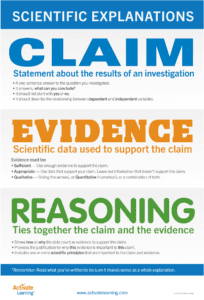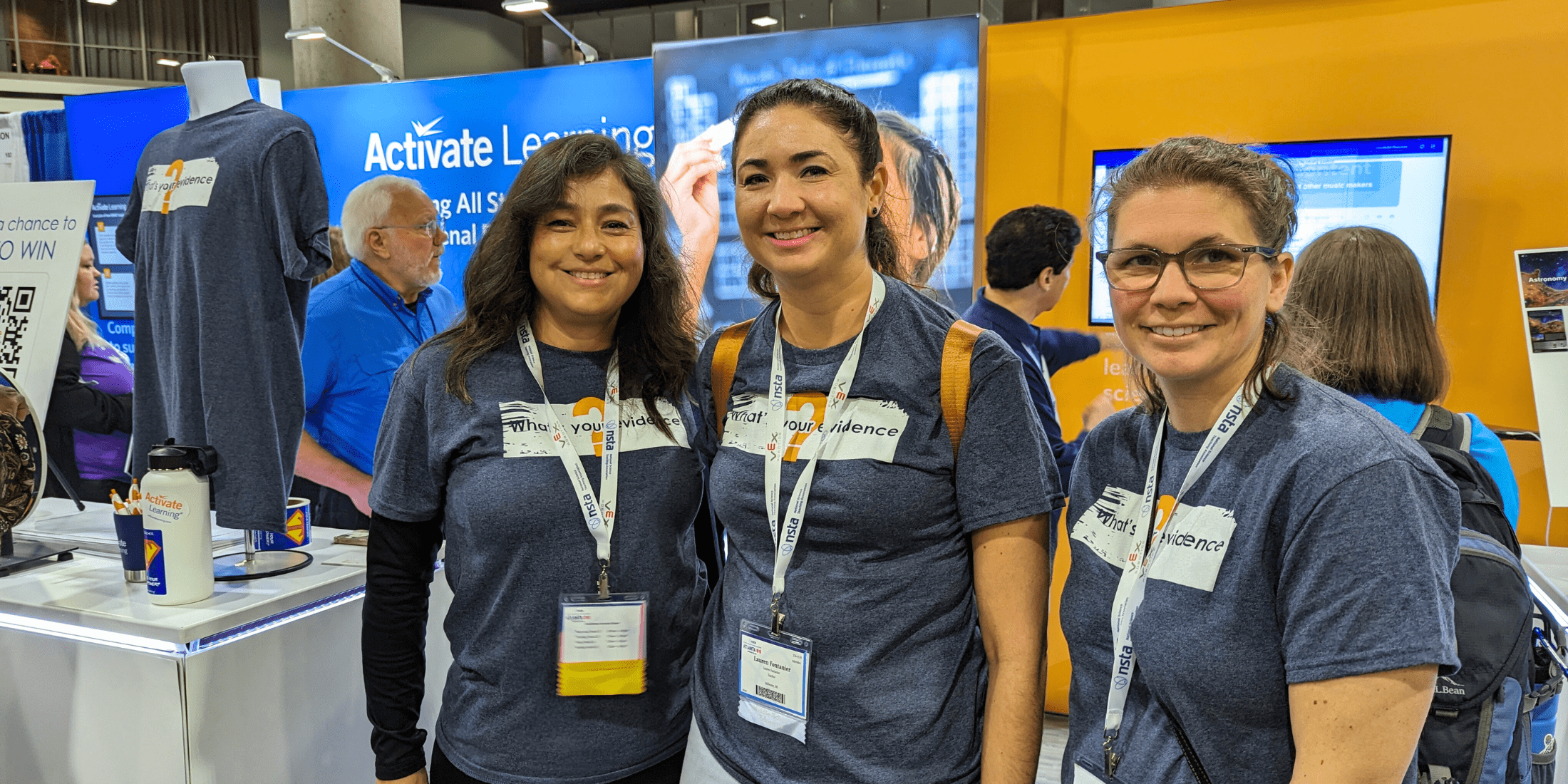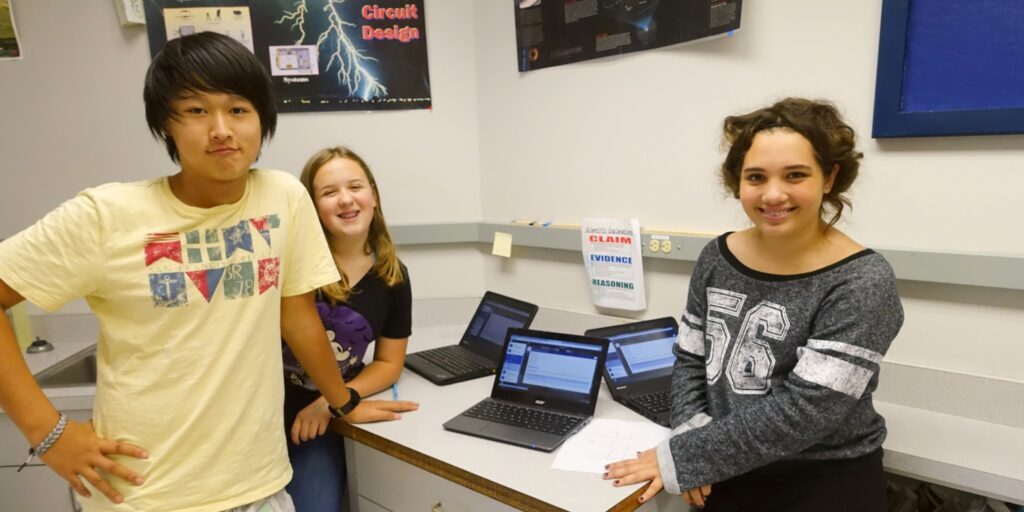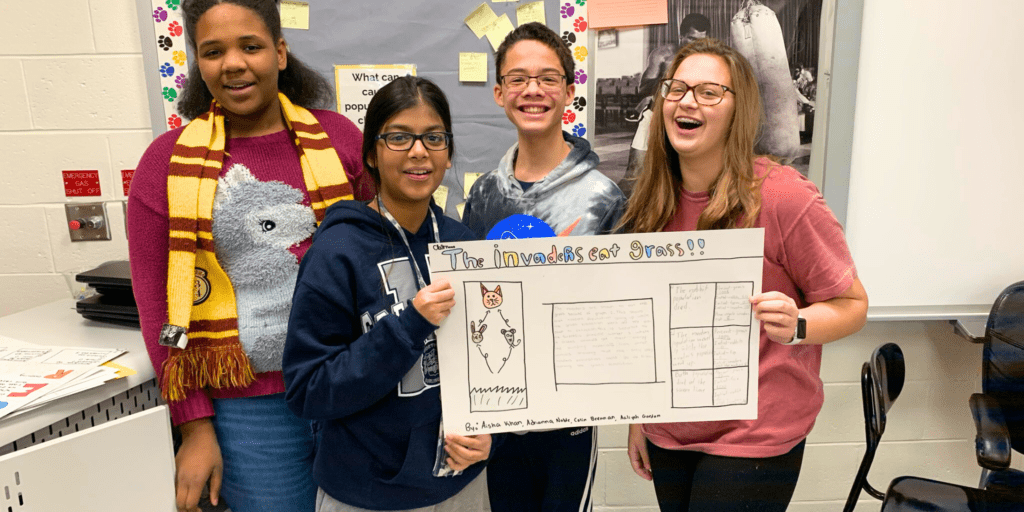Free Download! Get Your Claim Evidence Reasoning Poster

What is the Claim Evidence Reasoning Framework?
Science teachers understand the value of students being able to explain phenomena, not simply to define vocabulary words or to answer questions that require them to show what they have memorized. However, we also know that teaching students to construct explanations is challenging.
The Claim Evidence Reasoning framework, or CER for short, makes the process easier by supporting teachers and students with a systematic approach.
The CER framework divides explanations into three logical, manageable, and teachable components for middle school and high school science students: Claim, Evidence, and Reasoning.
Scientific Explanations using the CER Framework

Activate Learning Claim Evidence Reasoning Poster
We developed the CER framework alongside teachers who were frustrated by their students’ responses to oral and written questions—typically responding in such brief ways that teachers could not adequately assess their students’ understanding. The Claim Evidence Reasoning framework was born and developed in IQWST as a result of teachers’ desire to better support their middle school students as scientific thinkers and writers.
To begin, students must be asked questions that require them to think deeply about what they have observed, read, and experienced and to integrate that information as they explain the how or why of phenomena for a specific purpose and audience. Although an explanation must function as a whole, teachers often find it easier to teach the components separately and explicitly.
Download your free CER poster here, now available in English and Spanish!
CLAIM
A claim is a statement of a student’s understanding of a phenomenon or about the results of an investigation; it answers the original question by expressing what he or she is trying to help an audience understand and believe. In practice, teachers often teach that a claim cannot begin with “yes" or “no," and is typically the first sentence of an explanation.
Although a claim does not need to be the first sentence in an explanation, it is helpful for students to learn to construct explanations with specific guidelines that can be varied later. The claim is typically the part of an explanation that students find easiest to include and to identify as they critique others’ explanations.
Claims may be made about data that students have been given or that they have gathered themselves. If an investigation has independent and dependent variables, the claim describes the relationship between them.
The quality of an explanation is largely dependent on a good question to begin with, so consider first the question. After an investigation, have students return to that question, and their response, in a sentence, is typically a claim.
EVIDENCE
While data can refer to all the observations that students have collected or analyzed, data become evidence when used to support a claim. A claim is convincing to someone else only when there is strong evidence to support it.
The evidence for explanations can come from investigations students conduct, from observations they make, or from reports of empirical research others have done. In complex situations, more than one claim might be made about a single data set thus having accurate, appropriate, and sufficient evidence is what makes a claim convincing.
The idea that multiple claims might be made using the same data develops across the IQWST curriculum as the inquiry activities become more complex, and students’ options for research questions (and resulting claims and evidence) become increasingly open ended.
One challenge of the evidence component is that students assume they do not need to describe the data because their teacher and classmates already know what happened!
Thus, helping students to decide which data to choose and how to present those data as evidence is a key step in the process of learning to construct an explanation. Significant time must be devoted to helping students understand what counts as good evidence in science, drawn from qualitative and/or quantitative data, and what it means for evidence to be both appropriate and sufficient.
REASONING
Reasoning is the most challenging for both students and teachers. Reasoning illustrates why particular evidence is the correct evidence to use in support of a particular claim. Reasoning typically includes describing the scientific knowledge or theory, or what IQWST refers to as the Scientific Principle, that applies to a particular claim and evidence. The principles are not given to students, but are “figured out” through their own investigations and in the context of whole-class discussions.
Reasoning requires students to make explicit the steps of their thinking, showing the logic that leads from the evidence to the claim. Critiquing examples of explanations helps students recognize the components and the need for them. They quickly learn to determine what is missing or inadequately expressed—and because they find this easier than constructing their own explanations, it is often a good starting point.
Sharing an anonymous example from 3rd period with students from 1st period enables students to learn what to look for without feeling criticized early in the learning process. IQWST provides systematic scaffolding to guide students in constructing explanations of scientific phenomena and to support teachers in facilitating this process.
Using evidence and reasoning to construct explanations is one of the most important practices students can learn, with application beyond science class to high school, college, career, and citizenship readiness in all areas!
What's Your Evidence?
Our popular "What's Your Evidence" t-shirts and printed Claim, Evidence, Reasoning posters are available to pick up at the science education conferences that we attend! Check our upcoming conferences and events to locate an event near you!

Learn More About IQWST®
IQWST® was developed through grant funding from the National Science Foundation (NSF). The development team has combined expertise in science education, literacy education, and the learning sciences.
The team was led by Principal Investigators Joe Krajcik, Ph.D., Brian Reiser, Ph.D., LeeAnn Sutherland, Ph.D., and David Fortus, Ph.D.
The IQWST® program’s “learning-by-doing” pedagogical approach engages students as active learners and makes science come alive in ways that research has shown best support the broad range of learners found in every classroom. Students investigate questions relevant to their own daily lives by conducting investigations, collecting and analyzing data, developing and using models to explain phenomena, and engaging in healthy debate from evidence.




